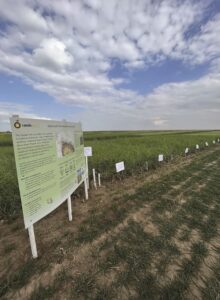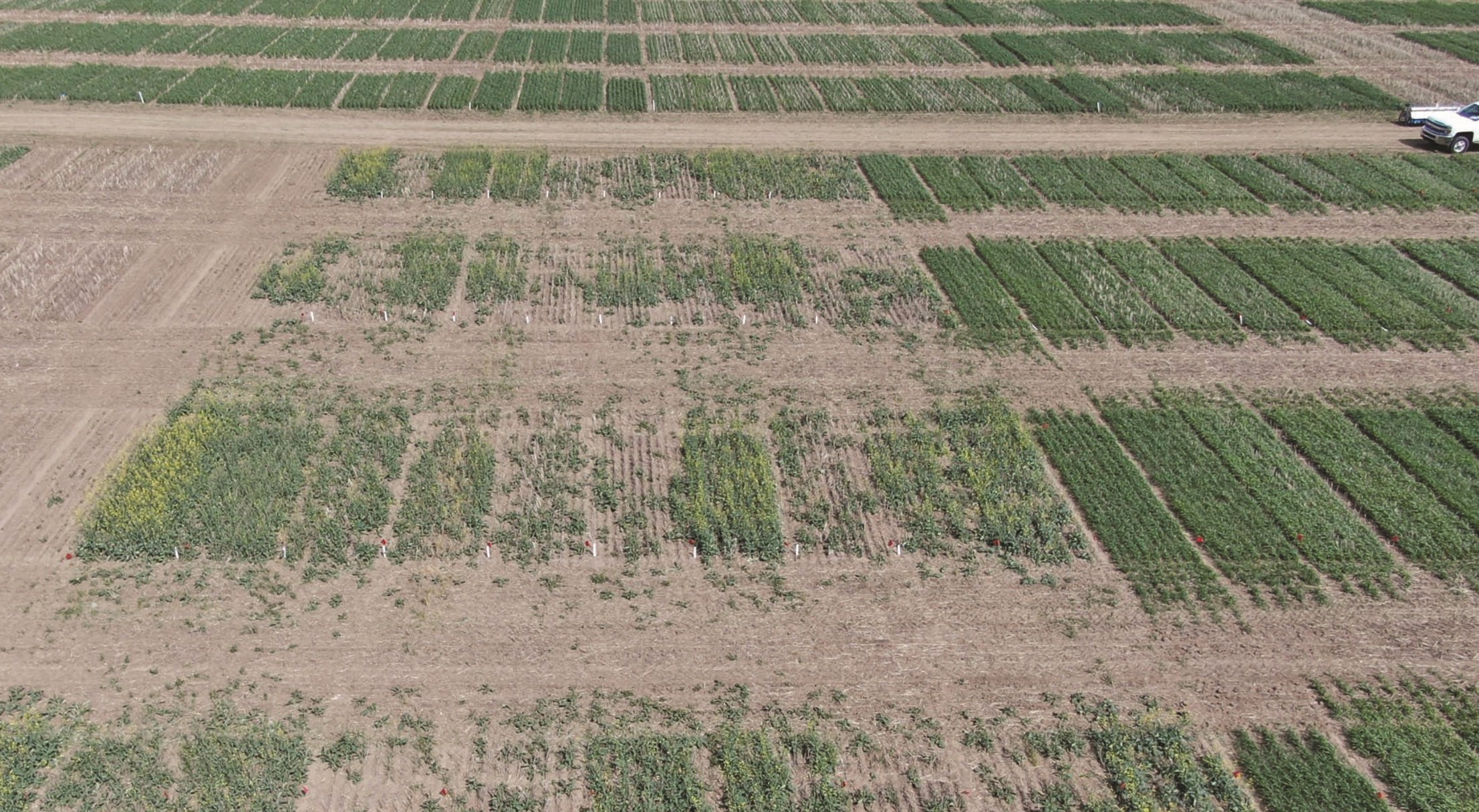Canola agronomy for the Brown soil zone
The Brown soil zone is a large region of lighter soils in southwest Saskatchewan and southeast Alberta. Total area is 30 million acres, with a little less than half dedicated to annual crops. These are grassland soils, like dark brown and black soils, but with historically lower moisture, higher heat, more wind and, therefore, lower organic matter and generally lower crop yields than the other soil zones.
Dominant crops in the Brown soil zone tend to be cereals and pulses, which can be more tolerant of warm, dry conditions. Durum wheat, barley, peas and lentils are popular in crop rotations. With rising demand for canola, the crop does present a potential market opportunity for this region. Here are practices that could improve results.

Canola as a rotation crop
Canola provides a break for fusarium head blight in cereals and aphanomyces in pulses. Canola cultivars with Group 9 (glyphosate) and Group 10 (glufosinate) resistance systems give growers new in-crop herbicide options to manage herbicide-resistant weeds.
Seeding
Common practice is to direct seed into standing stubble. Stubble captures winter moisture, protects soil from wind erosion, and residue reduces evapotranspiration of surface moisture. The Canola Council of Canada (CCC) surveyed agronomists and farmers in the Brown soil zone in 2022, asking about challenges to canola production. Common answers included seeding depth and seeding rate.
Depth. Experienced growers and agronomists do not have a consensus on the right depth. Some say that canola seeded 1-1/4” into moisture emerges faster and the crop is flowering before the heat of July. Others seed no more than 1” deep because they say canola seeded deeper often won’t emerge.
Rate. A common approach in the Brown soil zone is to target the lower end of the recommended range of five to eight plants per square foot.
Date. Farmers in the Brown soil zone usually start spring seeding before farmers in other soil zones. A common practice is to seed more frost-tolerant crops first (peas and cereals, for example) then follow with canola in late April and early May.
- Short season strategy. Choose an early-maturing cultivar that flowers before the hottest days of summer. Temperatures above 30°C can significantly reduce canola yields, especially if nighttime temperatures stay warm. Yield potential realized in mid- or long-season canola variety demonstration trials cannot always be attained in areas that tend to have higher ambient air temperatures in July and August.
- Long season strategy. Choose a later-maturing cultivar to
take advantage of the longer growing season.
Equipment. Ultimately, farmers in the Brown soil zone want a seeding system that works through residue without the need for tillage or harrowing. Disc drills are popular in the zone because their low soil disturbance minimizes moisture loss.
Farms could apply a nitrogen rate at seeding based on average or expected yield, then top up in season if moisture conditions vastly improve. Top end yield can be high in the Brown soil zone in years with higher rainfall.
Fertilizer
A common practice in the Brown soil zone is to apply seed and most (often all) fertilizer in one pass. A starter rate of phosphorus (which could be 40 lb./ac. of monoammonium phosphate) is the only fertilizer that should or could go in the seed row. Place all other fertilizer in bands away from the seed row. Seed-placed nitrogen is more damaging to canola seedlings in dry soils.
Split applications and risk management. Farms could apply a nitrogen rate at seeding based on average or expected yield, then top up in season if moisture conditions vastly improve. Top end yield can be high in the Brown soil zone in years with higher rainfall. In 2016, for example, the Brown soil zone had higher yields than any other soil zone on the Prairies. To reduce ammonia volatilization losses when top dressing urea, use a urease inhibitor.
Time is always a constraint on farms, but farmers may want to establish some on-farm trials to determine the efficacy, profitability and risk profile of applying some of the fertilizer at planting and applying additional nitrogen in the growing season. Data over fields and time will provide a useful dataset to determine whether in-crop nitrogen increases profitability, with consideration for the additional time required.
Soil sampling. Jeff Schoenau, University of Saskatchewan soil science professor and farmer from Central Butte, Saskatchewan, recommends soil tests that include depths to 24” to account for sulphates and nitrates that can accumulate in brown soils. (Sulphate and nitrate often leach deeper into the soil profile in black and grey soils.) Check micronutrients when soil sampling. While boron deficiencies are rare on the Prairies, canola needs more boron than other crops and boron levels can be low in sandy soils with low organic matter.
Harvest
Straight combining of canola is more common in the Brown soil zone. With the winds common in the Brown soil zone, most farmers would rather leave canola standing than risk swaths blowing. Shatter tolerance reduces the risk for straight combining. With a longer season and usually dryer conditions, standing canola will often dry down without the need for pre-harvest desiccant.
Weeds. Glyphosate-resistant kochia is a huge issue in the Brown soil zone. Early weed control is important to preserve as much moisture as possible for the crop. Fall weed control is also valuable. Autumns are long and regrowing weeds, emerging winter annuals and volunteer canola can take up scarce moisture.
Economics
Economic risk is a drawback to canola in the Brown soil zone, according to results from the CCC Brown soil zone survey. The upfront cost of seed, chemicals and fertilizer is higher for canola than for other common crops in rotation. Survey respondents say the contribution margin for canola can be equal to lentils, but canola is a higher risk crop due to input costs. Survey results also showed that growers who already grow canola are more inclined to spend money on their canola crops because they are familiar with what it takes to grow canola successfully. They understand the potential ROI from canola in a good growing season.





